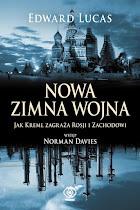Heaven on earth
Positing paradise
Jun 29th 2006
From The Economist print edition
For 3,000 years people have tried to imagine what paradise might look like. Two new books trace the history of the hereafter
Mapping Paradise: A History of Heaven on EarthBy Alessandro ScafiUniversity of Chicago Press; 400 pages; $55. British Library Publishing; £35Buy it atAmazon.comAmazon.co.uk
Paradise: A History of the Idea that Rules the WorldBy Kevin RushbyConstable & Robinson; 272 pages; £18.99. To be published in America by Carroll & Graf in November
Buy it atAmazon.co.uk
WHERE do you find paradise on a map? To the modern eye, used to the cheap and functional cartography of roads and frontiers, the very question is absurd. Maps show real things, not imaginary ones. You might as well look for happiness in a telephone directory.
As Alessandro Scafi shows in his erudite history of the Christian effort to map paradise, pre-modern mapmakers focused on spiritual navigation, not the secular kind. They tried to portray time and space in a way that is still beautiful, but can seem baffling. Their maps showed God, history, and human woes and joys, often biblical ones. The Garden of Eden was a real place, just as Adam was a real man.
Such maps depicted paradise as imaginatively and confidently as they did earthly topography. The world was like a plate; paradise was up a mountain, across a sea, perhaps guarded by angels, maybe in China, or Armenia, or Abyssinia, or Mesopotamia. Christopher Columbus, encountering the Amazon river's freshwater, thought it must flow from paradise.
Mr Scafi's book illustrates beautifully (though, sadly, all too often in black and white) how Eden shifted from the centre of maps to the periphery, and ultimately to the margins. The Renaissance and the Reformation boosted mankind's intellectual and cultural self-confidence. Although belief in a long-ago Eden's literal existence survived, most agreed with Martin Luther that it had perished in the flood. Even pious mapmakers found it hard to reconcile the clues in the Bible (a place where four rivers rose) with the realities of physical geography. Paradise became not just inaccessible, but something out of this world.
Even today, on the fringes of Christianity and in popular journalism, there are people who claim to have found the Garden of Eden. It may not be paradise now (especially if it is a dusty and desolate corner of Iraq). But it jolly well was once. Mr Scafi tells this story well from the sublime start to the ridiculous end, with spectacular flourishes of art history and confident quotes from Latin, Greek and Hebrew. But the focus is tight; other cultures' heavenly ideas are barely mentioned.
Kevin Rushby's book, by contrast, starts earlier, spreads wider and ends later. His enjoyable and informative canter through three millennia of intellectual and religious history highlights the many ways, ingenious, beautiful, wrongheaded or mad, in which humans have tried to define paradise, seek it or, latterly, create it.
The idea predates Christianity, coming from ancient Babylon, where a paradeiza was an enclosure used for easy hunting. That idea of abundance, or “endless bacon” as Mr Rushby nicely puts it, is a persistent thread. It comes up again in the Muslim idea of flowing streams and plentiful virgins, though he notes that huri (Persian for nymph) may be a Koranic mistranslation of the Aramaic for “white raisin”.
Yearning for abundance alternates with the idea that real paradise is swapping earthly pleasure for something better. For Pythagoras, true happiness came from knowledge, in particular from the order and harmony of maths. He had a point. The loveliest architecture uses phi, the constant he derived from the proportions of a pentagram (the discussion on phi is a rare moment of truth in the otherwise nonsensical “Da Vinci Code”).
The third, darker, thread is that paradise means purging the world of unbelievers, sin, filth and so forth. That gets its first outing in the Book of Revelation, a lurid account of the apocalypse probably best read as an allegory of the individual Christian's journey to salvation. Millenarian sects, especially tiny ones, gleefully quote the text showing that only 144,000 people will be saved. All three threads weave in and out of human history. The Pythagoreans resurface whenever scientific and intellectual enlightenment glistens. Mr Rushby's account of the saintly John Tradescant's museum in 17th-century London, with its collection of natural wonders and curiosities from the newly discovered worlds of East and West, is gripping. So is the story of its shameful hijacking by the duplicitous Elias Ashmole. Visitors to the Ashmolean museum in Oxford may ponder the extraordinary unfairness: how many other “ambitious, ingratiating” social climbers have stolen so completely a hero's legacy?
Modernity, and the luxury it created (initially for a few, then for many) made earthly abundance seem within reach. The Pilgrim Fathers hoped for an earthly paradise without the sin and selfishness of the Old World. Philanthropists such as Robert Owen wanted that too, but without divine inspiration. His experiment only bankrupted him. Later attempts to build paradise on earth cost millions of lives.
The prospect of acquired perfection lies behind many big ideas and most bad ones. If you do the right thing, believe the right thing, suffer enough, love enough, work hard enough, kill enough of the wrong people or breed enough of the right ones—then you will end up in paradise. That is a great motivator, often with awful results.
Neither modern consumerism nor the back-to-nature sentiments that make people yearn for rural bliss get a good write-up from Mr Rushby. Trying to transcend our own imperfections, rather than eradicating those of others, is the best bet, he argues. Amen to that.








1 comment:
Paradise: Its Denmark or Sweden, with an adequate salary and flexible enough employer to go on frequent holidays in warmer climes :)
Post a Comment